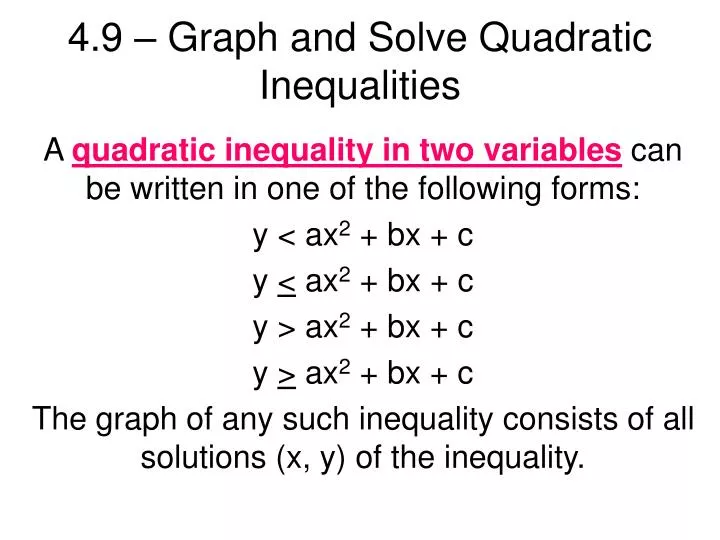
Run, students who have more flexibility will be more successful in "students need to be strongly encouraged, possibly required, to Multiple-method approach for solving inequalities. Piez and Voxman (1997), on the other hand, supported the The authors' impressions from their own teaching. However, their papers report no research that supports theirĬonclusions, which seems to suggest that these conclusions are based on Tool for solving not only quadratic, but any type of inequality. Suggested that the method they offered provided students with a powerful In fact, the researchers' claims wereĪctually more far-reaching, since both McLaurin and Dobbs and Peterson They explained that "one of the most appealingĪspects of sign charts is that they serve as a uniform and relativelyĮasy method for solving what many consider to be more complicated Sign-chart method as the best method for teaching quadratic McLaurin (1985) and Dobbs and Peterson (1991) identified the In what sense inequalities are related to functions. Quite a bit of insight into what it means to solve an inequality and Have had some experience with graphing functions. Inequalities easier for average and weaker than average students who This approach appears to make the solution of many Provided mathematical and didactical argumentation for their claim: ForĮxample, Dreyfus and Eisenberg (1985) preferred the graphic method and Presenting the students with any combinations of the two or all threeĪbove-mentioned methods for solving this type of inequality. Students with only one method, and the multiple-method approach, Identified in the literature: the single-method approach, presenting the Two approaches for teaching quadratic inequalities can be Which are connected to each other by "or" and "and" Translation of the inequality into a system of linear inequalities,

The logical-connectives method involves the Zeros of an equivalent equation and using a sign chart to determine the The sign-chart method involves finding the Interpretation of graphic representations, e.g., using parabolas to Quadratic inequalities: the graphic method, the sign-chart method, and The literature commonly presents three major methods for solving Preference? We address these issues with regard to the process of Tasks or when responding to explicit questions regarding their To the methods students choose either when solving related mathematical (as defined by the ability to answer correctly) or should we also attend Refer to? For example, should we only consider students' success A related question is, what should such didactic decisions May wonder whether there is any significance to the order of If, on the other hand, several methods are going to be presented, one Method is chosen, a question arises about the criteria for this choice. Type of mathematical problem or with a number of methods. To present their students with a single method for solving a specific When planning instruction, teachers may face the dilemma of whether Students' Preferences When Solving Quadratic Inequalities SomeĬonclusions and educational implications are drawn. The method most frequently used was the graphic method,Īnd many students preferred the method they had studied first. Solved the different inequalities, and most liked being presented with

We examined participants' preferences when solving related Methods, i.e., the graphic, the sign-chart, and the logical connectives method. Twenty 10th graders were presented with three differently sequenced

Method or with a number of methods for solving quadratic inequalities. We address the question whether to present students with a single

2006 Center for Teaching - Learning of Mathematics 18 Oct.
Solving quadratic inequalities free#


 0 kommentar(er)
0 kommentar(er)
